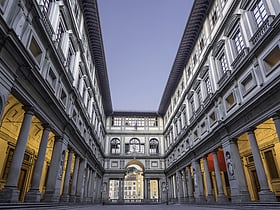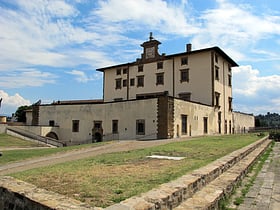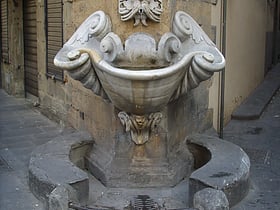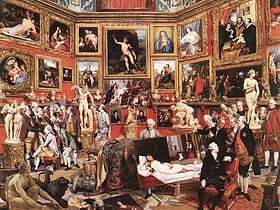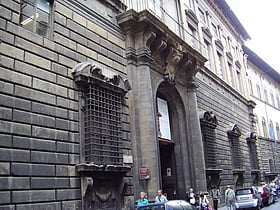Florence: Bernardo Buontalenti
Places and attractions in the Bernardo Buontalenti category
Categories
- Church
- Museum
- Palace
- Vernacular architecture
- Historical place
- Art museum
- Gothic architecture
- Sacred and religious sites
- Monuments and statues
- Specialty museum
- Unesco
- Square
- Romanesque architecture
- Architecture
- Baroque architecture
- Park
- History museum
- Forts and castles
- Memorial
- Shopping
- Library
- Monastery
- Cemetery
- Renaissance architecture
- Garden
- Tower
- Bridge
- Filippo Brunelleschi
- Concerts and shows
- Bernardo Buontalenti
- Bartolomeo Ammannati
- Sculpture
- Theater
- View point
- Neoclassical architecture
- Galileo Galilei
- Science museum
- Street
- Art gallery
- Opera
- Universities and schools
- Area
- Neighbourhood
Uffizi
Art museum with Renaissance masterpieces The Uffizi Gallery is a cornerstone of Florentine culture and one of the most prestigious art museums in the world. Nestled in the historic heart of Florence, Italy, this vast museum is celebrated for its outstanding collection of Renaissance masterpieces.
Belvedere Fort
16th-century fort with city views The Forte di Belvedere or Fortezza di Santa Maria in San Giorgio del Belvedere is a fortification in Florence, Italy.
Fontana dello Sprone
The Fountain dello Sprone, or Fontana dello Sprone, also called the Fontana del Buontalenti is an early 17th-century Mannerist-style public fountain found at the corner of via dello Sprone and Borgo San Jacopo, in the quarter of Oltrarno in the city of Florence, region of Tuscany, Italy.
Tribuna of the Uffizi
The Tribuna of the Uffizi is an octagonal room in the Uffizi gallery, Florence, Italy. Designed by Bernardo Buontalenti for Francesco I de' Medici for Cosimo I de’ Medici in 1584, the most important antiquities and High Renaissance and Bolognese paintings from the Medici collection were and still are displayed here.
Palazzo Nonfinito
The Palazzo Nonfinito is a Mannerist-style palace located on Via del Proconsolo #12, in central Florence, region of Tuscany, Italy. Begun in 1593 using designs by the architect Bernardo Buontalenti, only the first floor was completed, and additional construction was added later by different architects.
Map

